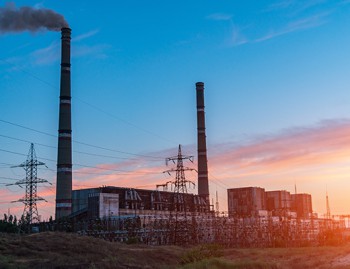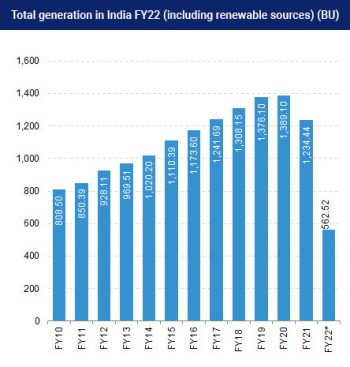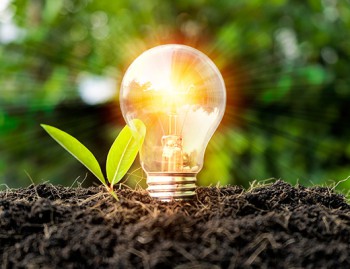INTRODUCTION
Power is among the most critical components of infrastructure, crucial for the economic growth and welfare of nations. The existence and development of adequate power infrastructure is essential for sustained growth of the Indian economy.
India's power sector is one of the most diversified in the world. Sources of power generation range from conventional sources such as coal, lignite, natural gas, oil, hydro and nuclear power to viable non-conventional sources such as wind, solar, and agricultural and domestic waste. Electricity demand in the country has increased rapidly and is expected to rise further in the years to come. In order to meet the increasing demand for electricity in the country, massive addition to the installed generating capacity is required.
India was ranked fourth in wind power, fifth in solar power and fourth in renewable power installed capacity, as of 2020. India is the only country among the G20 nations that is on track to achieve the targets under the Paris Agreement.

MARKET SIZE

Indian power sector is undergoing a significant change that has redefined the industry outlook. Sustained economic growth continues to drive electricity demand in India. The Government of India's focus on attaining 'Power for all' has accelerated capacity addition in the country. At the same time, the competitive intensity is increasing at both the market and supply sides (fuel, logistics, finances, and manpower).
India is the third-largest producer and second-largest consumer of electricity worldwide, with an installed power capacity of 395.07 GW, as of January 2022.
As of January 2022, India's installed renewable energy capacity stood at 152.36 GW, representing 38.56% of the overall installed power capacity. Solar energy is estimated to contribute 50.30 GW, followed by 40.1 GW from wind power, 10.17 GW from biomass and 46.51 GW from hydropower.
The renewable energy capacity addition stood at 8.2 GW for the first eight months of FY22 against 3.4 GW for the first eight months of FY21.
For FY21, electricity generation attained from conventional sources was at 1,234.44 BU, comprising 1,032.39 BU of thermal energy; hydro energy (150.30 BU) and nuclear (42.94 BU). Of this, 8.79 BU was imported from Bhutan.
Coal-based power installed capacity in India stood at 203.9 GW in January 2022 and is expected to reach 330-441 GW by 2040.
The peak power demand in the country stood at 203.01 GW in 2021.
INVESTMENT SCENARIO
Total FDI inflow in the power sector reached US$ 15.84 billion between April 2000-December 2021, accounting for 2.77% of the total FDI inflow in India.
Some major investments and developments in the Indian power sector are as follows:
- In March 2022, NTPC announced that it was ready to start partial power generation of 10 GW from a 92 MW floating solar energy plant being set up at NTPC's unit at Kayamkulam in Kerala.
- In March 2022, NTPC announced that it will start commercial operations of 74.88 MW capacity of its 296 MW Fatehgarh solar project in Rajasthan.
- In March 2022, Adani Solar and Smart Power India (SPI), a subsidiary of Rockefeller Foundation, signed a non-financial and non-commercial MoU to promote the usage of solar rooftop panels in rural India.
- In February 2022, Kolkata-based Eminent Electricity Distribution Ltd., a subsidiary of CESC Limited, bid Rs. 871 crore (US$ 113.24 million) to take over Chandigarh's power supply department, which was approved and the transition will happen by the end of March.
- SJVN Limited is looking to develop 10,000 MW solar power projects inviting an investment of Rs. 50,000 crore (US$ 6.56 billion) in the next five years in Rajasthan.
- In November 2021, the NTPC announced that its 80 MW solar power-generation capacity in Jetsar (Rajasthan) has started commercial operations from October 22, 2021. The total capacity of the project is 160 MW.
- In November 2021, SJVN began the second unit work of the 1,320 MW Buxar thermal power plant in Bihar.
- In October 2021, the NTPC was awarded a contract to set up a 325MW solar power project in Madhya Pradesh.
- On September 29, 2021, NTPC Renewable Energy ltd (REL), a 100% subsidiary of NTPC ltd, signed its first green term loan agreement with the Bank of India for Rs. 500 crore (US$ 67.28 million) at a competitive rate and a tenor of 15 years for its 470 MW solar projects in Rajasthan and 200 MW solar projects in Gujarat.
- In September 2021, Adani Group announced an investment of US$ 20 billion over the next 10 years in renewable energy generation and component manufacturing.
- In July 2021, National Thermal Power Corporation Renewable Energy Ltd (NTPC REL), NTPC's fully owned subsidiary, invited a domestic tender to build India's first green hydrogen fueling station in Leh, Ladakh.
- In July 2021, Bharat Heavy Electricals Limited (BHEL) received a large contract from Nuclear Power Corporation of India Limited (NPCIL) for the supply of 12 steam generators of India's highest rated indigenously-developed 700 MW Pressurized Heavy Water Reactors (PHWR) worth Rs. 1,405 crore (US$ 189.20 million).
- In July 2021, NTPC announced that it would invest Rs. 2-2.5 crore (US$ 0.27-0.34 million) over the next 10 years to expand renewable capacity.
- In June 2021, NHPC signed a memorandum of understanding (MoU) with Bihar State Hydro-Electric Power Corporation Limited (BSHPCL) to execute Dagmara HE Project (130.1 MW) in the state.
- In March 2021, Actis LLP, a private equity firm, announced plans to invest US$ 850 million to build two green energy platforms in India.
- According to the firm, the first platform will focus on setting up grid-connected solar and wind power parks, while the second platform will tailor to the commercial and industrial segment.
- In January 2021, TOTAL acquired a 20% stake in Adani Green Energy. In addition, as a part of this deal, TOTAL undertook 50% in 2.35 GW portfolio of operating solar assets in Adani Energy Limited. The combined deal amount was worth US$ 2.5 billion.
- In January 2021, Tata Power received a letter of award (LOA) from Kerala State Electricity Board Limited (KSEBL) to develop a 110 MW solar project. With this, Tata Power's renewable capacity will increase to 4,032 MW, out of which 2,667 MW is operational and 1365 MW is under implementation, including 110 MW won under this LOA.
GOVERNMENT INITIATIVES
The Government of India has identified power sector as a key sector of focus to promote sustained industrial growth. Some initiatives by the Government to boost the Indian power sector are as below:
- Under the Union Budget 2022-23, the government announced the issuance of sovereign green bonds, as well as conferring infrastructure status to energy storage systems, including grid-scale battery systems.
- In the Union Budget 2022-23, the government allocated Rs. 19,500 crore (US$ 2.57 billion) for a PLI scheme to boost the manufacturing of high-efficiency solar modules.
- Electrification in the country is increasing with support from schemes like Deen Dayal Upadhyay Gram Jyoti Yojana (DDUGJY), Ujwal DISCOM Assurance Yojana (UDAY), and Integrated Power Development Scheme (IPDS).
- In February 2022, a parliamentary standing committee recommended the government take steps to increase the loan limit for the renewable energy sector under priority sector lending. The current limit stands at Rs. 30 crore (U$ 3.93 million).
- In December 2021, West Bengal received a loan approval for US$ 135 million from the International Bank for Reconstruction and Development (also called the World Bank) to improve the operational efficiency and reliability of electricity supply in select regions in the state.
- In November 2021, the government announced future plans to increase the funding under the PLI scheme for domestic solar cells and module manufacturing to RS. 24,000 crore (US$ 3.17 billion) from the existing Rs. 4,500 crore (US$ 594.68 million) to make India an exporting nation.
- In November 2021, Energy Efficiency Services Limited (EESL) stated that it will partner with private sector energy service companies to scale up its Building Energy Efficiency Programme (BEEP).
- In September 2021, the Government of the United Kingdom announced that it will invest US$ 1.2 billion through public and private investments in green projects and renewable energy in India to support the latter's target of 450 GW of renewable energy by 2030.
- In September 2021, Mr. Raj Kumar Singh, Minister of Power, New and Renewable Energy, met with his Danish colleague, Mr. Dan Jrgensen, and announced to expand their cooperation in renewable energy, particularly offshore wind and green hydrogen.
- In July 2021, Ministry of Petroleum and Natural Gas, Government of India owned GAIL lined up Rs. 5,000 crore (US$ 671.14 million) for setting up two plants each for producing ethanol and compressed biogas (CBG) from municipal waste.
- In July 2021, India sent its first coal-laden rake (4,000 tonnes) to Bangladesh's Rampal Thermal Power Station. The 1,320 MW power plant is a joint venture between National Thermal Power Corporation (NTPC) and Bangladesh Power Development Board (BPDB).
- The government has spent US$ 4.63 billion on hydroelectric projects to provide electricity to villages in Jammu and Kashmir between 2018-21.
- In June 2021, India launched the Mission Innovation CleanTech Exchange, a global initiative that will create a whole network of incubators across member countries to accelerate clean energy innovation
- In June 2021, the Export-Import Bank of India (Exim Bank) announced that it has extended a line of credit (LOC) worth US$ 100 million to the Sri Lankan government for the purpose of funding projects in the solar energy sector and assure that the country's 70% power requirements are met by renewable energy sources by 2030.
ACHIEVEMENTS
Following are the achievements of the Government in the past four years:
- The Pradhan Mantri Sahaj Bijli Har Ghar Yojana, "Saubhagya", was launched by the Government of India with an aim of achieving universal household electrification. As of March 2021, 2.82 crore households have been electrified under this scheme.
- As of March 2022, over 36.79 crore LED bulbs, 72.17 lakh LED tube lights and 23.59 lakh energy-efficient fans have been distributed across the country, saving around 535 million kWh per year and Rs. 19,295 crore (US$ 2.5 billion) in cost savings.
- As of March 2022, over 40 lakh smart metres have been deployed under the National Smart Grid Mission (NSGM), with a further 72 lakh to be deployed.
- As per the National Infrastructure Pipeline 2019-25, energy sector projects accounted for the highest share (24%) out of the total expected capital expenditure of Rs. 111 lakh crore (US$ 1.4 trillion).
- According to the S&P Global Platts Top 250 Global Energy Rankings 2021, Reliance Industries Ltd. and Indian Oil Corp. Ltd. ranked 3rd and 6th, respectively.

- The Nathpa Jhakri Hydro Electricity Station of Satluj Jal Vidyut Nigam (SJVN) has set a new monthly power generation record, increasing from 1,213.10 million units to 1,216.56 million units on July 31, 2021.
- According to the Union Budget 2021-22, 139 GW of installed capacity and 1.41 lakh circuit km of transmission lines were added and 2.8 crore households were connected in the past 6 years.
- Solar tariffs in India have reduced from Rs. 7.36/kWh (US 10 cents/kWh) in FY15 to Rs. 2.45/kWh (US 3.2 cents/kWh) in July 2021.
- NTPC Ltd.'s oldest unit in Singrauli, Uttar Pradesh, has achieved the highest Plant Load Factor (PLF) of 100.24% among all thermal units in the country between April 2020 and December 2020.
- India's rank jumped to 22 in 2019 from 137 in 2014 on World Bank's Ease of doing business - "Getting Electricity" ranking.
- The Union Power Ministry said the peak power demand deficit stood at 0.4% in 2020-21, compared to 16.6% in 2007-08 and 10.6% in 2011-12.
ROAD AHEAD
The Government of India has released its roadmap to achieve 227 GW capacity in renewable energy (including 114 GW of solar power and 67 GW of wind power) by 2022. The Union Government of India is preparing a 'rent a roof' policy for supporting its target of generating 40 gigawatts (GW) of power through solar rooftop projects by 2022.
The Central Electricity Authority (CEA) estimates India's power requirement to grow to reach 817 GW by 2030. The government plans to establish renewable energy capacity of 500 GW by 2030.
Note: Conversion rate used in November 2021, Rs. 1 = US$ 0.01336
References: Central Electricity Authority, Ministry of New and Renewable Energy, Media Reports, Press Releases, Press Information Bureau (PIB)
Disclaimer: This information has been collected through secondary research and IBEF is not responsible for any errors in the same.
Power India
- Rajasthan
- Uttar Pradesh
- Gujarat
- Maharashtra
- Karnataka
- Tamil Nadu

Industry Contacts
- Ministry of New and Renewable Energy (MNRE)
- Indian Wind Energy Association (INWEA)
- Indian Electrical & Electronics Manufacturer’s Association (IEEMA)
- Central Electricity Authority